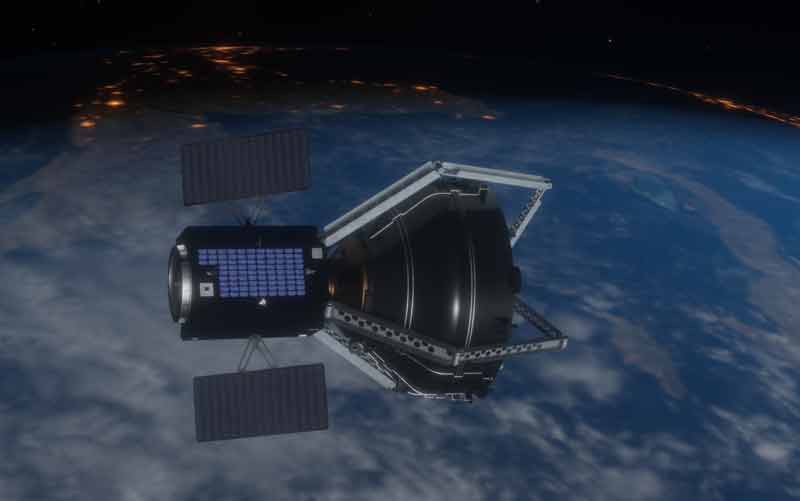ClearSpace tackles failed satellites and the proliferation of debris in space. With the help of Innosuisse, this start-up from the Swiss Federal Institute of Technology Lausanne is developing technology based on artificial intelligence that is capable of approaching and capturing such debris. The goal is to make it a viable business model over the long term.
As there are now nearly 2,000 operational satellites and with more than 3,000 decommissioned satellites currently in space, space junk has become an issue. As a result of wear and tear, collisions and explosions, these objects disintegrate into pieces of different sizes. The European Space Agency (ESA) estimates that there are currently more than 34,000 waste items in space measuring more than 10 cm.
It’s time to act
Revolving around the Earth at a speed of 28,000 km/h, these objects turn into projectiles that can pose a threat to activities in space and to astronauts. Depending on its orbit and distance, this debris can take hundreds of years to naturally de-orbit, or even remain in space indefinitely. “Solutions to remove satellites that are coming to the end of their mission or that prove to be defective are therefore necessary,” says Luc Piguet, CEO of ClearSpace.
Two years in existence but ten years of experience
Created at the beginning of 2018, the start-up is the direct result of research that has been conducted at the EPFL Space Center since 2010. “We became aware of the debris problem after the launch of the SwissCube nano satellite by EPFL in 2009. It was launched through a debris field caused by a collision between two satellites,” explains the CEO. “The data transmitted by the U.S. Air Force alerted us to the risk of a collision between our satellite and the debris in space.
At the end of 2019, ClearSpace was selected to carry out an ESA-led mission. Named ClearSpace-1, this mission – scheduled for 2025 – will aim to remove an object that has become inactive from space: the Vespa Upper Part, a secondary satellite adapter for the European launcher Vega. The debris has become uncontrollable, and is now moving around at about 700 km from the Earth’s surface.

Innosuisse in orbit
The year-long project supported by Innosuisse aims to develop technologies to locate items of debris and their position. ClearSpace cooperates with two research partners, the EPFL and the School of Engineering and Management Vaud.
These teams are developing various sensors that will be used by the debris hunter to navigate through space. “A radar will detect debris up to a kilometre away. A camera will then take over to view the last few metres,” explains Jean-Paul Kneib, an astrophysicist at EPFL. “In order to capture the object, we need to determine not only its position, but also its rotation in space. At EPFL, three laboratories are actively working on these visualisation aspects using numerical modelling.”
The detection radar was designed by engineers from the School of Engineering and Management Vaud. The project manager, Dominique Bovey, believes that participating in an Innosuisse project is beneficial at all levels: “We share our expertise in applied technology, and at the same time, we gain a lot of experience for future projects.
“The Innosuisse project allows us to improve the level of technological maturity of our project,” observes Luc Piguet. “While investors are often reluctant to invest in this area, Innosuisse has placed its trust in us. This is important, because it is essential to work on these technologies today in order to be able to provide an adequate service to the space industry when it proves necessary.”
Text: Johanne Stettler
Last modification 27.06.2022





